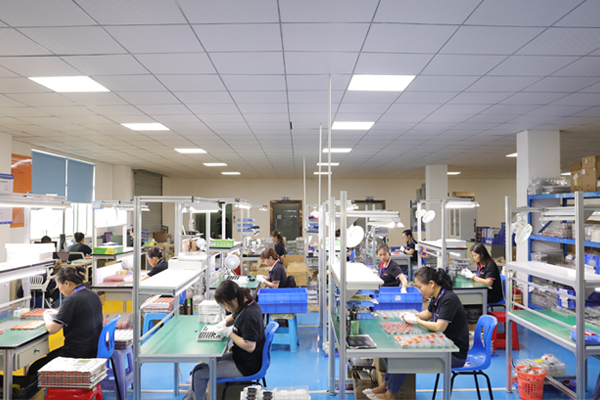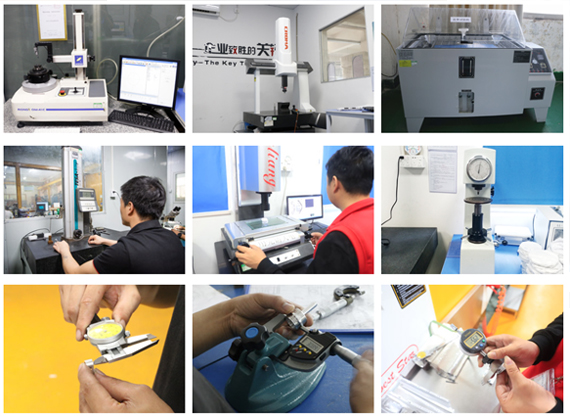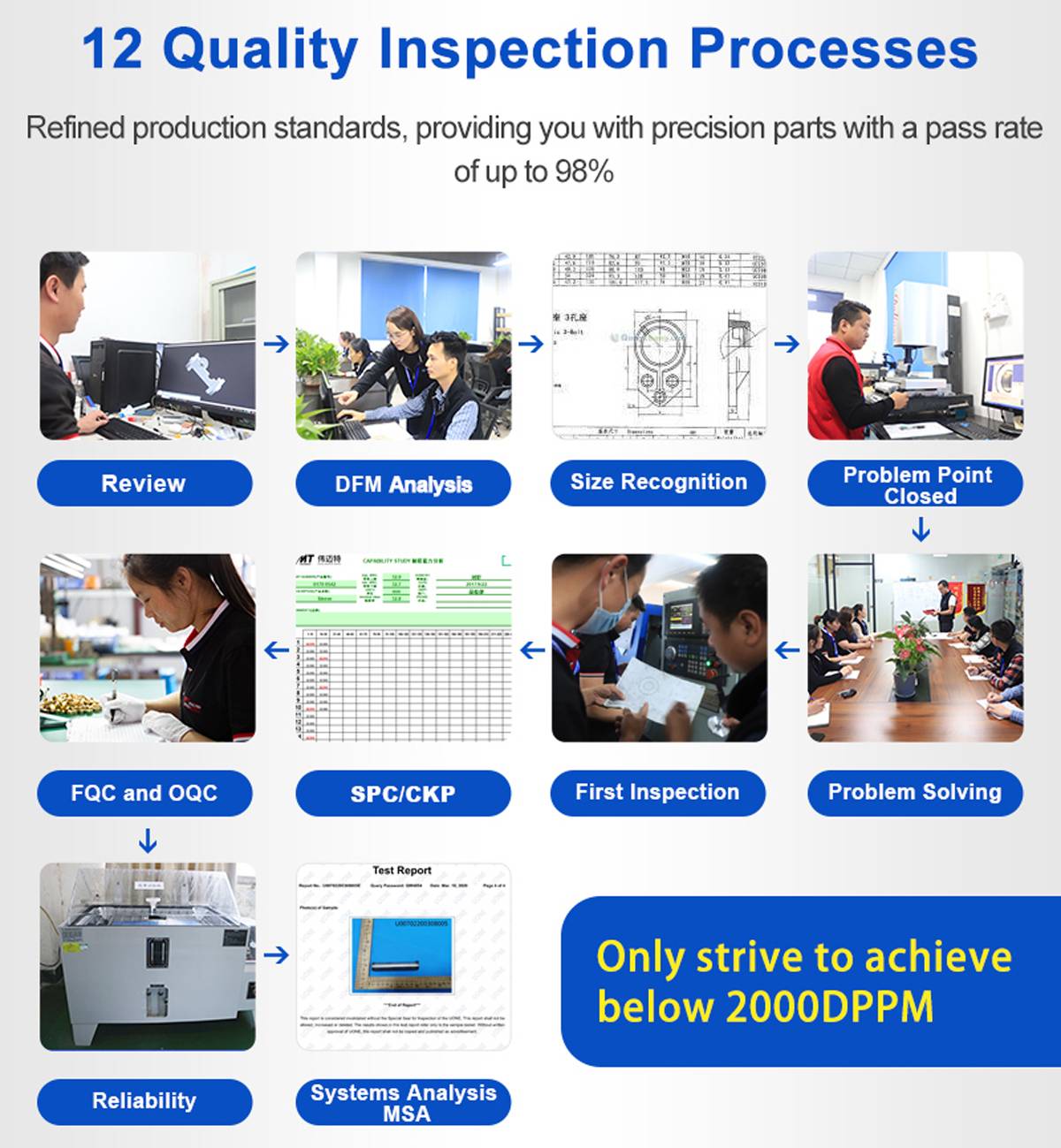15 years one-stop China custom CNC machining parts factory

Hey there I’m VMT Sam!
With 25 years of CNC machining experience we are committed to helping clients overcome 10000 complex part-processing challenges all to contribute to a better life through intelligent manufacturing. Contact us now
 107 |
Published by VMT at Mar 30 2024
107 |
Published by VMT at Mar 30 2024
In the field of CNC machining part manufacturing, the self-inspection process of precision CNC machined parts plays a crucial role in ensuring product quality, enhancing production efficiency, and reducing production costs. Self-inspection is not only an important part of the quality control system but also a key step in achieving manufacturing process intelligence and automation. This article will delve into the correlation in self-inspection of precision CNC machined parts from a professional perspective, aiming to provide readers with useful insights and guidance.

I. Concept and Significance of Self-Inspection for Precision CNC Machined Parts
Self-inspection of precision CNC machined parts refers to the process of automatically detecting and evaluating key indicators such as dimensions, shapes, positional accuracy, and surface quality of parts during or after the machining process using specific inspection equipment and methods. This process aims to ensure that the machining quality of parts meets design requirements, promptly identify and correct potential machining errors, and thereby improve product yield.
The significance of self-inspection for precision CNC machined parts lies in its ability to provide real-time feedback and adjustments during the machining process, thereby improving machining efficiency and accuracy. Through self-inspection, factories can promptly identify and resolve issues, reduce rework and scrap due to quality issues, and lower production costs. Additionally, self-inspection contributes to enhancing product reliability and stability, thereby strengthening the competitiveness of enterprises.

II. Current Development Status of Self-Inspection Equipment and Technology
With the continuous advancement of CNC machining technology, self-inspection equipment and technology have also made significant progress. Currently, various types of self-inspection equipment are available on the market, such as coordinate measuring machines, optical measuring instruments, laser scanners, etc. These devices feature high precision, efficiency, and automation, meeting the self-inspection needs of different parts.
In terms of self-inspection technology, with the development of machine vision, artificial intelligence, and other technologies, self-inspection systems have been able to achieve more complex and accurate measurements and evaluations. For example, machine vision-based self-inspection systems can automatically detect surface quality of parts through image processing techniques, while AI-based self-inspection systems can continuously improve the accuracy and efficiency of self-inspection through learning and optimization algorithms.

III. Self-Inspection Process and Key Control Points
The self-inspection process of precision CNC machined parts typically includes several steps: determining inspection items, selecting inspection equipment, developing inspection plans, implementing inspection operations, and recording and analyzing inspection results. At each step, strict control of key control points is required to ensure the accuracy and effectiveness of self-inspection.
When determining inspection items, it is necessary to clarify the key indicators to be tested based on the design requirements and machining processes of the parts. When selecting inspection equipment, factors such as equipment precision, stability, and applicability need to be considered. When developing inspection plans, it is essential to arrange the timing, frequency, and sequence of inspections reasonably to ensure the continuity and stability of the machining process. During the implementation of inspection operations, it is necessary to strictly follow the operating procedures to avoid human errors. Finally, when recording and analyzing inspection results, scientific methods should be adopted to process and analyze data to promptly identify and address issues.

IV. Integration of Self-Inspection with Quality Control Systems
Self-inspection of precision CNC machined parts is an essential part of the quality control system. To fully leverage the role of self-inspection, it needs to be deeply integrated with the quality control system. Specifically, the integration of self-inspection with quality control systems can be achieved through the following aspects:
First, include self-inspection in the management scope of the quality control system, clarifying its status and role. Second, establish quality standards and testing specifications compatible with self-inspection to ensure the consistency and comparability of self-inspection operations. Third, strengthen the collection, organization, and analysis of self-inspection data to provide strong support for the improvement and optimization of the quality control system. Finally, enhance employee awareness and importance of self-inspection through training and education, fostering a good atmosphere of full participation and joint maintenance of quality control.
V. Future Trends and Prospects of Self-Inspection
With the continuous development of manufacturing technology and the changing market demand, self-inspection of precision CNC machined parts will face new challenges and opportunities. In the future, self-inspection technology will evolve towards higher precision, efficiency, and intelligence. Additionally, with the widespread application of industrial Internet, big data, and other technologies, self-inspection systems will be more closely integrated and coordinated with the manufacturing process, providing strong support for intelligent manufacturing and green manufacturing.
Looking ahead, self-inspection of precision CNC machined parts will play a more important role in improving product quality, reducing production costs, and enhancing production efficiency. Furthermore, with the continuous advancement of technology and the expansion of application fields, self-inspection technology will be widely applied and promoted in more areas.
VI. Conclusion
The analysis of the correlation in self-inspection of precision CNC machined parts reveals the significant role of self-inspection in improving product quality, optimizing the production process, and enhancing production efficiency. By deeply understanding the concept and significance of self-inspection, mastering the development status of self-inspection equipment and technology, following scientific self-inspection processes and key control points, and integrating self-inspection with quality control systems, we can effectively leverage the potential of self-inspection and propel CNC machining factories towards higher levels of intelligent manufacturing.
In the face of the future, we should continue to focus on the innovation and development of self-inspection technology, actively explore the application of new technologies and methods in self-inspection, and continuously improve the accuracy and efficiency of self-inspection. Additionally, we should strengthen talent training and team building, cultivate a self-inspection team with professional knowledge and skills, and provide strong talent support for the continuous development of the precision CNC machining part manufacturing field.
In summary, self-inspection of precision CNC machined parts is a technology of significant importance and continuous development. Through continuous in-depth research and practical application, we can continuously improve the correlation of self-inspection and contribute to the progress and development of the precision CNC machining part manufacturing field.
Ready To Start Your Next Project?
Get Instant Quote

Request a Free Quote
Send us a message if you have any questions or request a quote. We will get back to you ASAP!